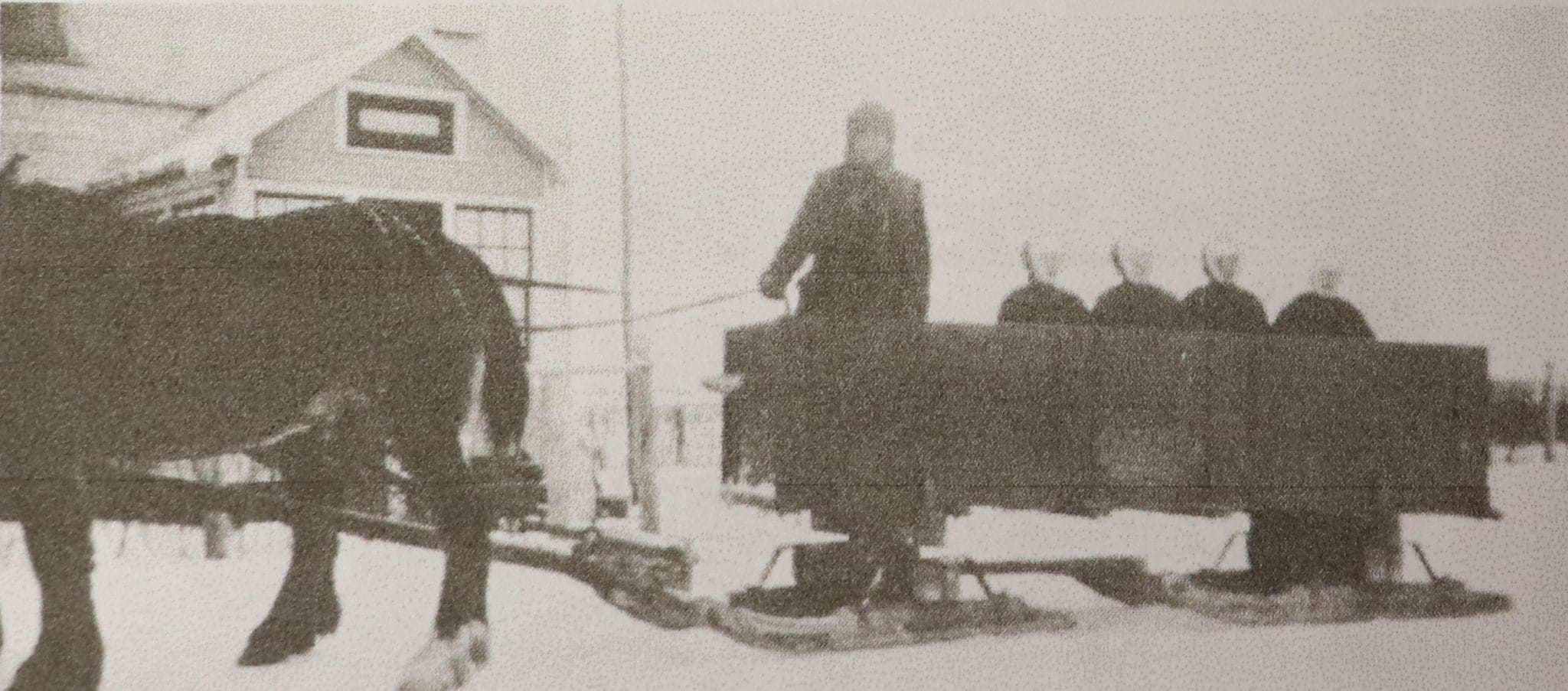
Standing the test of time
Historic church in Friedenstal commemorates its 100th anniversary this year
Kyle Greenham
Northern Light
The towering steeple of St. Boniface Church has stood high above the gravel roads and farmland of Friedenstal for over a century.
From its rugged exterior of deteriorating paint and wood, one may expect St. Boniface Church, which has been closed since the 1970s, to be worn out and decrepit. But stepping inside, its altars, statues, crosses, vestments and chandelier are well preserved and almost miraculously pristine – looking as if the church had only closed its doors that previous Sunday.
The church not only celebrates its centennial anniversary this year, this month honours the church’s patron saint – St. Boniface. His feast day was June 5.

Living just up the road from the historic church is Ed and Elizabeth Dechant. The couple have spent much of their life in Friedenstal. Ed’s ancestors first settled there from Germany in 1916. His mother’s side of the family fled to Canada from Russia in the 1920s, to escape communist persecution.
Even by the time his father arrived in 1916, Ed says Friedenstal was already well established. The area was settled by more than 50 different families, who were nearly all German Catholics.
“Pretty much every corner of the land somebody had taken,” he said. “People started coming here and surveying the land around 1909, and after that it just exploded. And the families didn’t travel much in those days; they pretty much stayed, hunted moose and were self-sufficient.”
Like much of the early Church in western Canada, the first priests to come to Friedenstal were Oblates of Mary Immaculate. The majority of St. Boniface’s priests came from Germany, and the parishioners were very insistent on having a German priest for their area.

They set up a small log church around 1913, with the permission of Bishop Emile Grouard, OMI. In 1920 construction began on their current St. Boniface Church. It was designed and built by Brother Eisemon, OMI. The first Mass was celebrated on Christmas Eve, 1921 with its first pastor Fr. Wilhelm Ebert. Ed says every Mass was around 2 and half hours, as the sermon was preached in both English and German.
The church was blessed by Bishop Grouard on August 15, 1922.
Shortly afterward, the Sisters of Providence established a convent and boarding school that was attended by children from Friedenstal and outlying areas. Ed had never learned to speak any English until he began attending that school.
“When the nuns came, a new rectory was built and the nuns took over the old one as a convent,” said Ed. “When I was a kid, the church was pretty active. They had a resident priest, and a younger priest that helped him. It’s the place where people would met. I went to school right next door, and got to know the kids who came that would stay at the dorms.”

Elizabeth’s most cherished memory of St. Boniface is the church choir. With a parish priest that was fond of the traditional music of the Church, there was great efforts to ensure the 30-person choir was up to the highest standard.
“One of our priests Father [Anthony] Herter just loved classical music,” Elizabeth recalled. “They would sing all in Latin, and they arranged the singing in four different parts. It was quite a commotion. The choir had to be as good as possible.”
The Corpus Christi feast was one of the parish’s biggest celebrations. Parishioners would plant trees in honour of the feast day, and hold a procession through the whole community, with altars set up throughout the area.
In the winter time, a fire had to be started in the furnace of the church every Saturday evening to prepare for Sunday Mass and “get the chill out” of the building. Ed says that sometimes, depending on who started the fire, it would be pretty smoky in the church and you would be tempted to go outside during Mass to try and cool down.

In the 1950s some refurbishments were done on the church, replacing some of the original woodwork and repainting it. But no serious restoration work has been done on the church since that time. Fr. Martin Doll, OMI, was ordained a priest at the church on June 30, 1952.
When the railway was established along Fairview in the late 1920s, gradually all major resources began to centralize in that area. By the mid-1960s Fridenstal’s school shut down, and then in 1969, St. Boniface Church’s doors were closed. Locals then had to make the trip to Fairview for school and Sunday Mass.
At the time, Ed says opinion was split. The church was still very active, but with the closure of the school many expected that the church would be next.
Today there are only about 25 families in the Friedenstal area. As Elizabeth says, now the farms are getting bigger, but the people are getting less.
Even if it has been closed for more than 50 years, St. Boniface Church is one part of Friedenstal that still remains.
“For a 100-year-old church it’s in pretty good shape, but it needs some work,” said Ed.

One major issue is that the church was built without a solid foundation. When it was constructed in 1920, they used only big rocks and put timbers over them. Now that the church has been designated as a historical site by the province, Ed and Elizabeth hope in the future it can get some needed restoration work on its foundation and exterior.
In May 1982, the Friedenstal Historical Society was established. They own and look after the property today.
“Any government funding we would get for it we would have to match it locally,” said Ed. “With COVID a lot of fundraising we would normally do has been put on hold.
“The funding we need could get pretty major considering it needs a new foundation.”